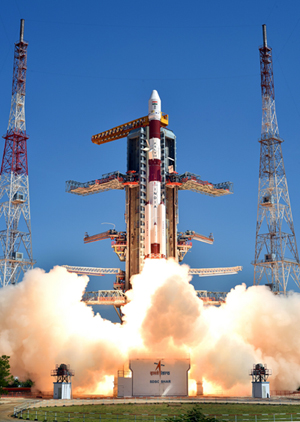INDIAN ARMED FORCES CHIEFS ON OUR RELENTLESS AND FOCUSED PUBLISHING EFFORTS

The insightful articles, inspiring narrations and analytical perspectives presented by the Editorial Team, establish an alluring connect with the reader. My compliments and best wishes to SP Guide Publications.

"Over the past 60 years, the growth of SP Guide Publications has mirrored the rising stature of Indian Navy. Its well-researched and informative magazines on Defence and Aerospace sector have served to shape an educated opinion of our military personnel, policy makers and the public alike. I wish SP's Publication team continued success, fair winds and following seas in all future endeavour!"

Since, its inception in 1964, SP Guide Publications has consistently demonstrated commitment to high-quality journalism in the aerospace and defence sectors, earning a well-deserved reputation as Asia's largest media house in this domain. I wish SP Guide Publications continued success in its pursuit of excellence.
ISRO: Of Satellites, Moon and Mars
 |
By Lt. General P.C. Katoch (Retd) Former Director General of Information Systems, Indian Army |

It may be recalled that on June 22, 2016, India launched 20 satellites in one go, which was the maximum ever by ISRO. The world record for launching the maximum number of satellites in one shot is currently held by Russia, which launched 37 satellites on June 19, 2014. At second position is the US that had placed 29 satellites in orbit on November 19, 2013 using the Orbital Sciences-built Minotaur-1 rocket. But now, ISRO plans to do the unprecedented - launching 82 foreign satellites in one go 15 January 2017. If this goes through as planned, it would truly be gigantic leap and a historic moment for India. This was disclosed by the Project Director of Mars Orbiter Mission (MOM) recently attending the Brand India Summit in Mumbai. According to him these 82 satellites include 60 of the US, 20 from Europe and two British. With this mission in January next, ISRO will break a second global space record within a space of some two and a half years.
On 24 September 2014, India was the first country to have entered the orbit of Mars in the very first attempt a record breaking feat that had won international acclaim for India. The rocket for ISRO’s historic mission to launch 62 satellites together will be the advanced version of the four-stage Polar Satellite Launch Vehicle (PSLV) designated PSLV-XL. The rocket will place all 82 satellites will be placed in a 580-km polar sun synchronous orbit in a span of 20-25 minutes after launch. India’s second lunar mission, Chandrayaan-2, is slated to land on the moon by December 2018, ground tests for which have already commenced. Meanwhile Team Indus, a Bengaluru based startup company is vying for the Google Lunar XPRIZE of $30 million, as the only Indian entry competing with 15 global participants to develop low-cost method of robotic space exploration. The requirement is to place a spacecraft on Moon’s surface that can travel 500 metres and transmit high-definition video and images back to earth. Team Indus is confident that their rover ‘Indie’ will be heading to the moon in 2017. Their engineering team includes scientists from ISRO.
Indie, the lunar rover weighing 10 kgs has four-wheel drive that can be controlled from earth. Each wheel is independently driven and the rover can navigate the moon’s surface including craters. It will take about four seconds for Indie to execute a command given from earth, use the pan tilt mechanism to connect back to earth and beam back high-definition lunar images. The spacecraft will be housed inside the nosecone of an ISRO PSLV. Team Indus has already received $1 million as Milestone prize for landing technology. It is awaiting an official contract to transport and launch their aircraft along with funding. If successful, this will be India’s first ever privately funded space exploration mission. India’s second mission to Mars, designated MOM-2, is provisionally slated for launch in 2020.
MOM-2 will not be landing on Mars but instead will go close to the Mars surface using aerobraking method to undertake Mars-related scientific experiments. It should be a matter of pride that India’s first satellite to Mars (MOM) is being analyzed by international space agencies and management schools to pave the way for low-cost access to deep space. ISRO is making India proud consistently. Government must look at establishing 24x7 satellite cover astride our borders and perhaps a satellite to explore free internet access pan India that can provide two-way communication, unlike the one-way communication of DTH.





